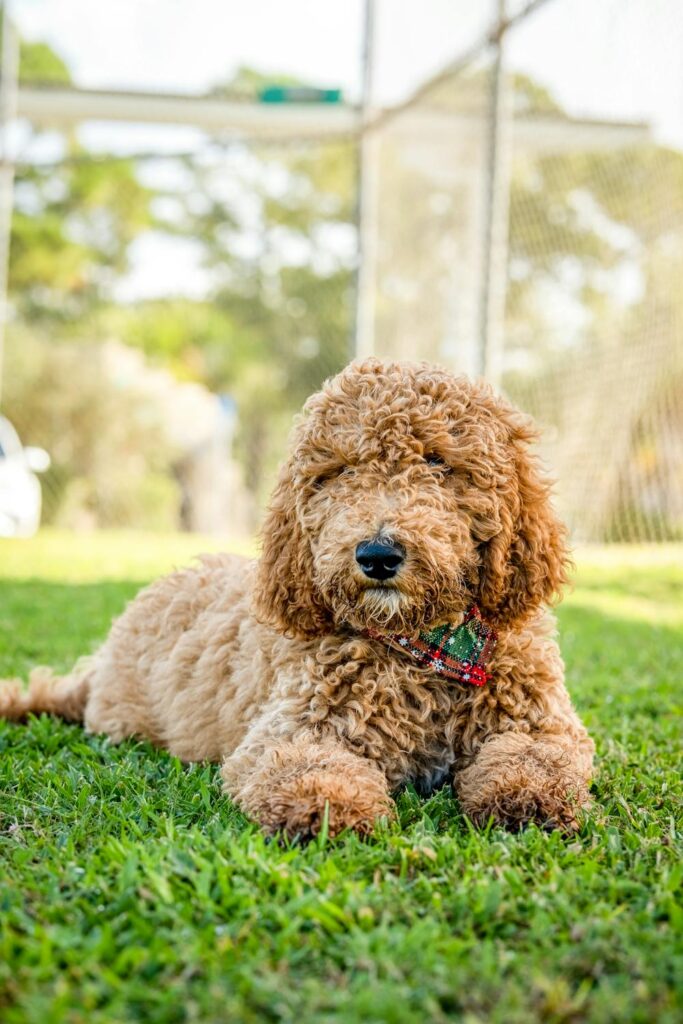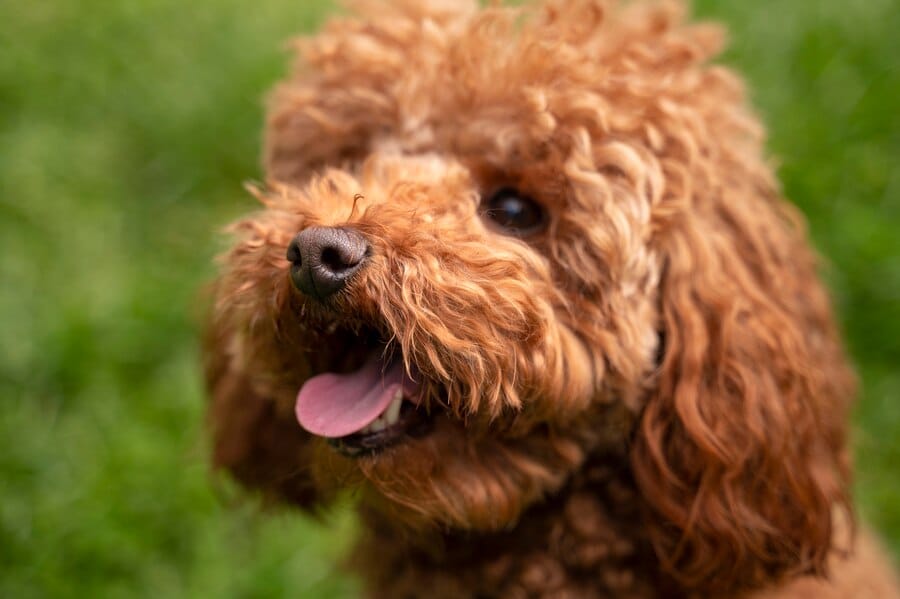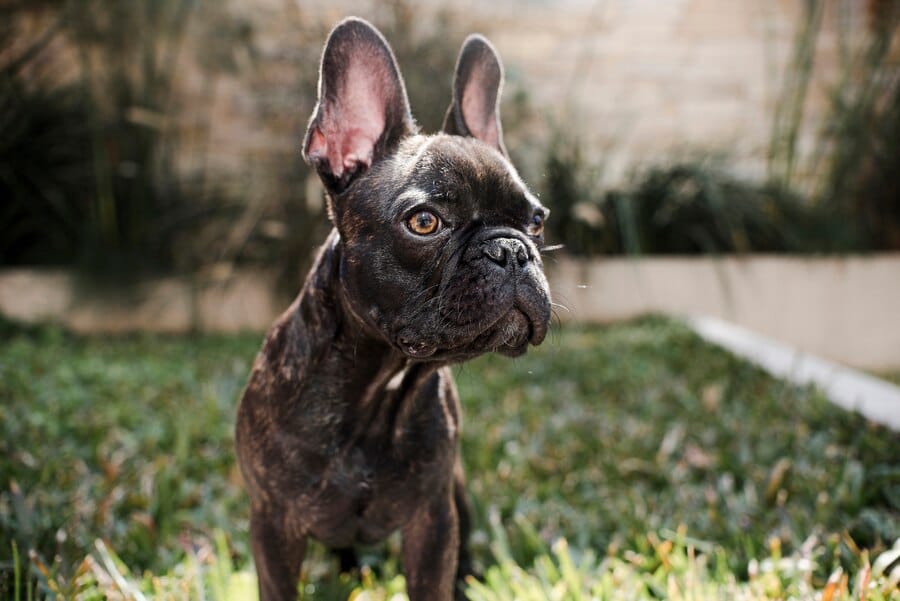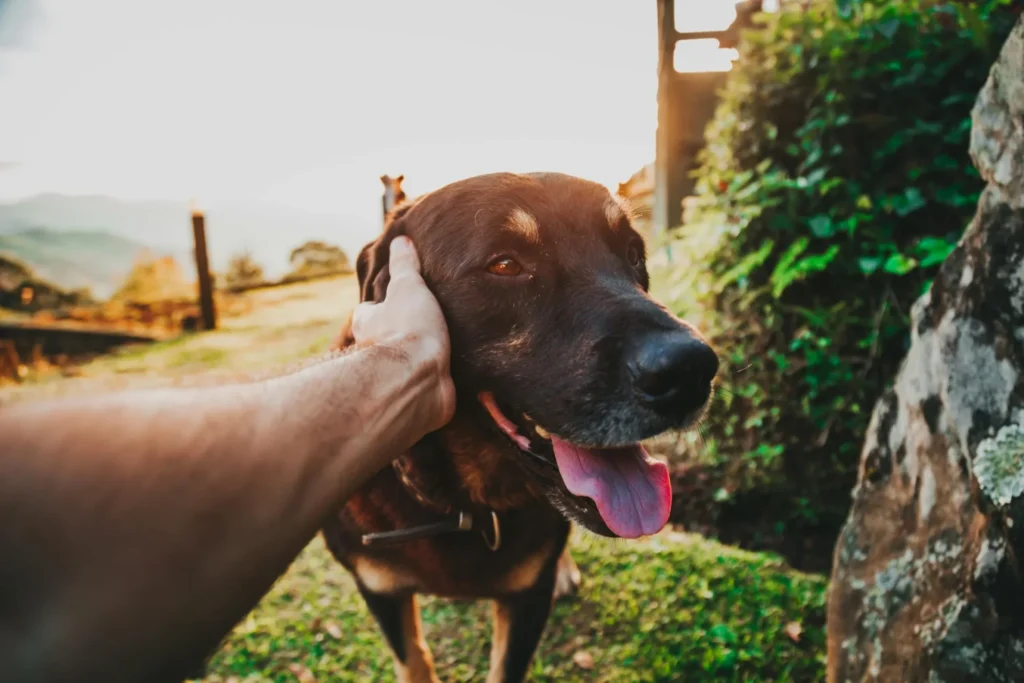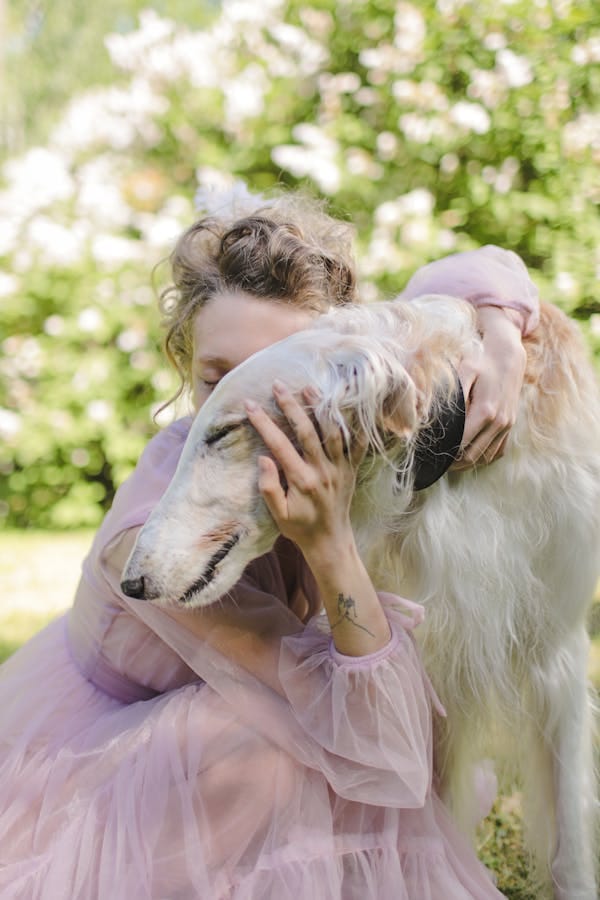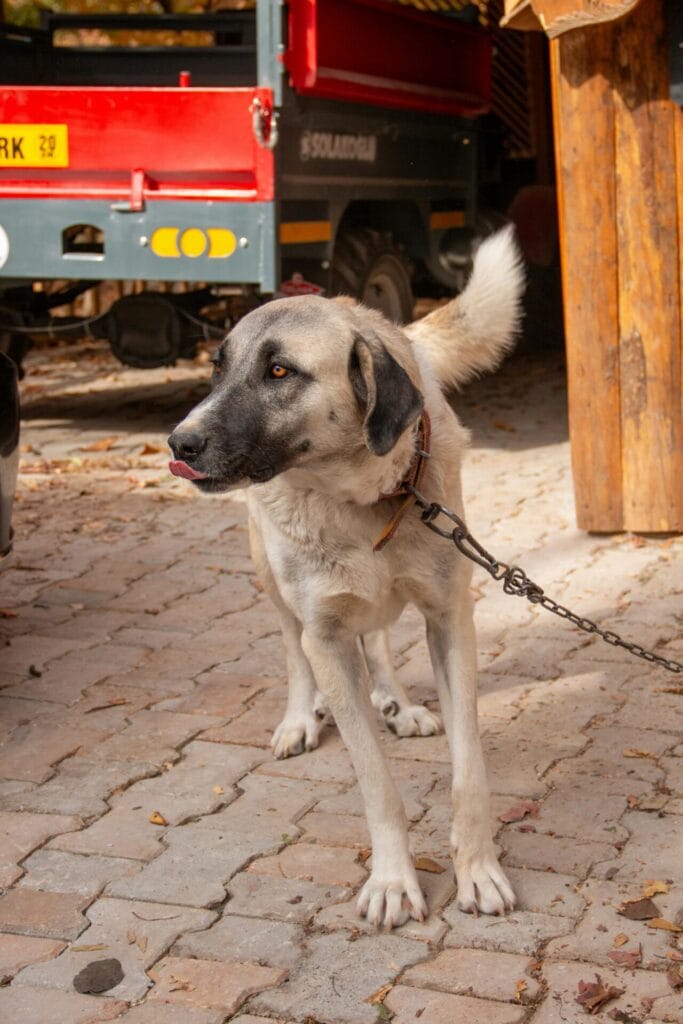- Introduction: The Dachshund’s Reputation – Fact vs. Fiction 🕵️♂️
- The Dachshund’s Origin Story: From Badger Hunter to Lap Dog 🏰
- Dachshund Varieties: Does Size or Coat Affect Hunting Instinct? 🔍
- The Big Question: Are Dachshunds Killers? 🔪
- Dachshunds vs. Other Breeds: The Prey Drive Scale 📊
- The Truth About Dachshund Aggression: It’s Complicated 🤔
- Nurture vs. Nature: Shaping Your Dachshund’s Behavior 🏡
- Training Your Dachshund: Tips for Managing Prey Drive 🎓
- Health Issues That Can Affect Dachshund Behavior 🏥
- The Dachshund Diet: Fueling Good Behavior 🍽️
- Exercise for Dachshunds: Channeling Energy Positively 🏃♀️
- Dachshund Body Language: Reading Your Dog’s Signals 📖
- Socialization: The Key to a Well-Adjusted Dachshund 🤝
- Dealing with Dachshund Aggression: When to Seek Help 🆘
- The Joys of Dachshund Ownership: Why They’re Worth It 💖
- Dachshund Myths Debunked: Separating Fact from Fiction 🕵️♀️
- Famous Dachshunds: Celebrities Who Defy the “Killer” Stereotype 🌟
- Dachshund Rescue: Giving a Second Chance 🏠
- The Future of Dachshunds: Breeding for Temperament 🧬
- Dachshunds in the Modern World: Adapting Ancient Instincts 🌍
- Dachshunds and Other Pets: Can They Coexist? 🐱🐰
- The Dachshund’s Hunting Instinct: A Double-Edged Sword ⚔️
- Alternatives to Hunting: Satisfying Your Dachshund’s Instincts 🎯
- Dachshund Aggression: Nature vs. Nurture 🧬 vs 🏡
- The Dachshund Temperament: A Complex Personality 🎭
- Dachshund Health: The Link Between Physical and Behavioral Well-being 🩺
- Dachshunds and Children: A Special Consideration 👶
- The Dachshund’s Bark: More Than Just Noise 🔊
- Dachshund Varieties: Does Coat Type Affect Behavior? 🐾
- The Senior Dachshund: Changes in Behavior with Age 👵
- Dachshunds in Popular Culture: Shaping Public Perception 📺
- The Ethics of Dachshund Breeding: Looking to the Future 🔮
- Conclusion: Dachshunds – Complex, Capable, and Lovable 💖
- FAQs About Dachshunds and Their Behavior ❓
Introduction: The Dachshund’s Reputation – Fact vs. Fiction 🕵️♂️
When you think of a fierce predator, a low-to-the-ground, long-bodied dog with stubby legs might not be the first image that comes to mind. Yet, the dachshund, affectionately known as the “wiener dog,” has a reputation that sometimes precedes it. Are these pint-sized pooches really the killers some make them out to be? Let’s dive deep into the world of dachshunds and separate myth from reality.
The Dachshund’s Origin Story: From Badger Hunter to Lap Dog 🏰
To understand the dachshund’s nature, we need to travel back in time to 15th century Germany. The name “dachshund” literally translates to “badger dog” in German, giving us our first clue about their original purpose.
Were Dachshunds Bred to Hunt Badgers? 🦡
Yes, dachshunds were indeed bred to hunt badgers! Their long, low bodies were perfectly designed to dig into badger dens, while their loud bark could alert hunters to their location underground. This breeding history has left an indelible mark on the dachshund’s personality and instincts.
Key traits developed for badger hunting:
- Courage 💪
- Tenacity 😤
- Strong prey drive 🏹
- Loud bark 🔊
- Powerful jaws 🦷
These traits, while perfect for their original purpose, can sometimes lead to behaviors that modern dog owners find challenging.
Dachshund Varieties: Does Size or Coat Affect Hunting Instinct? 🔍
Dachshunds come in various sizes and coat types. Let’s compare:
| Variety | Size | Coat Type | Typical Temperament | Hunting Instinct |
|---|---|---|---|---|
| Standard Smooth | 16-32 lbs | Short, smooth | Confident, bold | High |
| Miniature Smooth | Under 11 lbs | Short, smooth | Feisty, energetic | Moderate to High |
| Standard Long-haired | 16-32 lbs | Long, silky | Calmer, gentler | Moderate |
| Miniature Long-haired | Under 11 lbs | Long, silky | Sweet, docile | Low to Moderate |
| Standard Wire-haired | 16-32 lbs | Wiry, rough | Mischievous, outgoing | High |
| Miniature Wire-haired | Under 11 lbs | Wiry, rough | Spunky, affectionate | Moderate to High |
While all dachshunds share a common ancestry, breeding for different sizes and coat types has led to some variations in temperament and hunting instinct.
The Big Question: Are Dachshunds Killers? 🔪
Now, let’s address the elephant in the room – or should we say, the badger in the den? Are dachshunds really killers?
The short answer: No, dachshunds are not inherently killers. However, their breeding history has given them instincts that, if not properly managed, can lead to aggressive behavior towards certain animals.
Let’s break it down by examining their relationship with various creatures:
Can Dachshunds Kill Snakes? 🐍
Were Dachshunds Bred to Hunt Snakes?
While not their primary prey, dachshunds were often used to hunt small game, including snakes. Their long bodies and fearless nature made them adept at pursuing snakes into their hideouts.
Can they kill snakes? Yes, a determined dachshund could potentially kill a snake, especially a smaller one. However, this doesn’t mean they’re safe from snake bites. Always keep your dachshund away from venomous snakes!
Do Dachshunds Kill Rats? 🐀
Were Dachshunds Bred to Hunt Rats?
While not their primary purpose, dachshunds were often used as ratters due to their size and tenacity. Their strong prey drive makes them natural rat hunters.
Can they kill rats? Absolutely. Dachshunds have the instinct and ability to catch and kill rats. However, it’s important to note that not all individual dachshunds will display this behavior, and it’s not recommended to use them for pest control due to the risk of injury or disease.
Do Dachshunds Kill Mice? 🐁
Similar to rats, mice fall into the category of small prey that dachshunds were bred to hunt. Their keen sense of smell and relentless pursuit make them effective mouse hunters.
Can they kill mice? Yes, most dachshunds have the ability to catch and kill mice. However, as with rats, it’s not advisable to rely on them for pest control.
Do Dachshunds Kill Chickens? 🐔
Were Dachshunds Bred to Hunt Chickens?
No, dachshunds were not specifically bred to hunt chickens. However, their strong prey drive can sometimes extend to poultry if they’re not properly trained or supervised.
Can they kill chickens? A determined dachshund could potentially kill a chicken, especially if they see it as prey. It’s crucial to properly introduce dachshunds to chickens and supervise their interactions.
Can a Dachshund Kill a Human? 👤
This might seem like an outlandish question, but it’s one that some people genuinely ask. Let’s address it head-on:
No, a dachshund cannot kill a healthy adult human. While dachshunds can be fierce for their size, they simply don’t have the physical capability to fatally wound an adult human.
However, it’s important to note that any dog, regardless of size, can cause injury if provoked or not properly trained. Always treat dogs with respect and teach children how to interact safely with them.
Can a Dachshund Kill a Fox? 🦊
Were Dachshunds Bred to Hunt Foxes?
While not their primary prey, dachshunds were sometimes used in fox hunting, particularly to flush foxes out of their dens.
Can they kill a fox? It’s unlikely that a dachshund could kill a healthy adult fox. Foxes are generally larger and more agile than dachshunds. However, a dachshund might be able to seriously injure a fox, especially if cornered.
Can a Dachshund Kill a Honey Badger? 🍯🦡
This is an interesting matchup, given that dachshunds were bred to hunt badgers. However, honey badgers are known for their ferocity and tough skin.
Can they kill a honey badger? It’s highly unlikely. Honey badgers are renowned for their ability to fend off much larger predators. A dachshund would be outmatched in such a confrontation.
Can a Dachshund Kill a Raccoon? 🦝
Were Dachshunds Bred to Hunt Raccoons?
While not specifically bred for raccoon hunting, dachshunds’ tenacity and prey drive could make them interested in pursuing raccoons.
Can they kill a raccoon? It’s possible but unlikely. Raccoons are generally larger and more aggressive than dachshunds. Any confrontation between a dachshund and a raccoon could result in serious injury to the dog.
Can a Dachshund Kill a Kitten? 🐱
Dachshunds weren’t bred to hunt cats, but their prey drive can sometimes extend to small animals like kittens.
Can they kill a kitten? Unfortunately, yes, a dachshund could potentially kill a kitten if not properly socialized or supervised. It’s crucial to introduce dachshunds to cats carefully and always supervise interactions, especially with kittens.
Dachshunds vs. Other Breeds: The Prey Drive Scale 📊
How do dachshunds compare to other breeds in terms of prey drive? Let’s take a look:
| Breed | Prey Drive | Aggression Towards Small Animals | Overall “Killer” Ranking |
|---|---|---|---|
| Dachshund | High | High | 7/10 |
| Jack Russell Terrier | Very High | Very High | 9/10 |
| Labrador Retriever | Moderate | Low | 3/10 |
| German Shepherd | High | Moderate | 6/10 |
| Chihuahua | Low | Moderate | 2/10 |
| Greyhound | Very High | High | 8/10 |
Remember, these are generalizations. Individual dogs can vary greatly based on their upbringing and experiences.
The Truth About Dachshund Aggression: It’s Complicated 🤔
Dachshunds aren’t inherently aggressive towards humans, but they can display aggressive behaviors if:
- They’re not properly socialized
- They feel threatened or scared
- They’re in pain or discomfort
- They haven’t been trained consistently
- Their prey drive is triggered by small animals
It’s crucial to understand that aggression in dachshunds (or any dog) is often a symptom of an underlying issue, not a personality trait.
Nurture vs. Nature: Shaping Your Dachshund’s Behavior 🏡
While genetics play a role, a dachshund’s environment significantly shapes their behavior. Key factors include:
- Early socialization with various animals and people
- Consistent training
- Positive reinforcement
- Regular exercise
- Mental stimulation
A well-rounded upbringing can help manage prey drive and prevent aggressive tendencies, nurturing a friendly, well-adjusted dachshund.
Training Your Dachshund: Tips for Managing Prey Drive 🎓
Training a dachshund requires patience and consistency. Here are some tips specifically for managing prey drive:
- Start early: Socialize your puppy with various animals from a young age.
- Use positive reinforcement: Reward calm behavior around potential “prey” animals.
- Teach a solid “leave it” command.
- Provide plenty of appropriate outlets for their hunting instincts, like puzzle toys and scent work.
- Never punish your dachshund for displaying prey drive – instead, redirect their attention.
- Consider professional training if you’re struggling to manage your dachshund’s prey drive.
Remember, dachshunds can be stubborn. Stay patient and keep training sessions short and fun.
Health Issues That Can Affect Dachshund Behavior 🏥
Sometimes, what looks like aggression or excessive prey drive might be a health issue in disguise. Common health problems in dachshunds include:
- Intervertebral Disc Disease (IVDD)
- Hip dysplasia
- Eye problems
- Obesity
Pain or discomfort from these conditions can lead to irritability or aggression. Regular vet check-ups can catch these issues early and prevent behavior changes.
The Dachshund Diet: Fueling Good Behavior 🍽️
A balanced diet can contribute to better behavior. Dachshunds need:
- High-quality protein
- Controlled portions to prevent obesity
- Omega-3 fatty acids for brain health
- Glucosamine for joint health
Consult with your vet to create the best diet plan for your dachshund. A well-fed dog is less likely to display problematic behaviors.
Exercise for Dachshunds: Channeling Energy Positively 🏃♀️
Regular exercise is crucial for preventing behavioral issues and managing prey drive. Dachshunds enjoy:
- Short walks (15-20 minutes, 2-3 times daily)
- Indoor play sessions
- Fetch games
- Nose work activities
Remember to avoid high-impact activities that could strain their long backs. A tired dachshund is less likely to engage in problematic behaviors.
Dachshund Body Language: Reading Your Dog’s Signals 📖
Understanding your dachshund’s body language can help prevent aggressive incidents. Watch for:
- Tail position (tucked = fearful, high and stiff = alert or aggressive)
- Ear position (forward = interested, back = fearful or submissive)
- Body posture (stiff and forward = potentially aggressive, relaxed = comfortable)
- Hackles raised = aroused or agitated
Learning to read these signals can help you intervene before a situation escalates, especially when your dachshund encounters potential “prey” animals.
Socialization: The Key to a Well-Adjusted Dachshund 🤝
Proper socialization is crucial for managing a dachshund’s prey drive and preventing aggression. Expose your dachshund to:
- Different people (ages, genders, races)
- Other dogs of various sizes
- Cats and other small pets
- Livestock and farm animals (if possible)
- Various environments
- Different sounds and experiences
Start socialization early, but remember it’s an ongoing process throughout your dog’s life. Positive experiences with a variety of animals can help curb the instinct to chase or attack.
Dealing with Dachshund Aggression: When to Seek Help 🆘
If your dachshund shows signs of aggression or unmanageable prey drive, don’t ignore it. Seek help if you notice:
- Growling or snapping at family members
- Excessive barking or lunging at other animals
- Resource guarding (food, toys, people)
- Unprovoked biting
- Inability to calm down around small animals
A professional dog trainer or animal behaviorist can help address these issues. Don’t wait until a serious incident occurs.
The Joys of Dachshund Ownership: Why They’re Worth It 💖
Despite their potential challenges, dachshunds make wonderful pets. They offer:
- Unwavering loyalty
- Endless entertainment
- Snuggle companionship
- Adaptability to various living situations
- Surprising courage in a small package
With proper care, training, and management of their instincts, a dachshund can be a loving, well-behaved family member.
Dachshund Myths Debunked: Separating Fact from Fiction 🕵️♀️
Let’s clear up some common misconceptions:
- Myth: All dachshunds are aggressive killers.
Fact: While they have a strong prey drive, proper training and socialization can result in a friendly, well-adjusted dachshund. - Myth: Dachshunds can’t be trained due to their stubbornness.
Fact: They’re intelligent and can learn with consistent, positive reinforcement. Their stubbornness is often a sign of their intelligence and independent nature. - Myth: Dachshunds aren’t good with children.
Fact: With proper introductions and supervision, dachshunds can be great family dogs. However, their long backs make them vulnerable to injury, so children should be taught how to handle them gently. - Myth: Dachshunds don’t need much exercise due to their small size.
Fact: Despite their short legs, dachshunds need regular exercise for physical and mental health. A lack of exercise can lead to obesity and behavioral issues. - Myth: Dachshunds are impossible to house train.
Fact: While they can be challenging to house train, consistency and positive reinforcement can lead to success. Their stubborn nature just means you might need a bit more patience.
Famous Dachshunds: Celebrities Who Defy the “Killer” Stereotype 🌟
Dachshunds have had their share of fame, often showcasing their lovable rather than their fierce side. Some notable dachshunds include:
- Crusoe the Celebrity Dachshund (Instagram star known for his adorable costumes)
- Obie (once the world’s fattest dachshund, now slim and healthy)
- Waldi (mascot of the 1972 Munich Olympics)
- Buster and Babs (Queen Margrethe II of Denmark’s beloved dachshunds)
These pups show the charming and lovable side of the breed, far from the “killer” image some might have.
Dachshund Rescue: Giving a Second Chance 🏠
If you’re considering a dachshund, don’t overlook rescue organizations. Adopting a rescue dachshund can be rewarding, but remember:
- They may need extra patience and training
- Their history might be unknown, including their experiences with other animals
- They often come with a wealth of love to give
Many rescue dachshunds overcome challenging pasts to become loving pets. When adopting, be sure to discuss the dog’s history with small animals and any known prey drive issues.
The Future of Dachshunds: Breeding for Temperament 🧬
Responsible breeders are working to improve dachshund temperament while maintaining their unique characteristics. They focus on:
- Selecting parent dogs with good temperaments
- Early socialization of puppies
- Health testing to prevent genetic issues that could affect behavior
Dachshunds in the Modern World: Adapting Ancient Instincts 🌍
As we’ve explored, dachshunds were bred for a specific purpose that’s largely obsolete in today’s world. So how do we help these little hunters adapt to modern life? Let’s dive deeper.
Urban Dachshunds: City Life for a Country Dog 🏙️
Many dachshunds now live in urban environments, far from the badger dens they were bred to explore. This shift presents both challenges and opportunities:
- Limited Space: Apartment living can be suitable for dachshunds, but they need regular exercise to prevent boredom and obesity.
- Noise Sensitivity: City noises might trigger their alert barking instincts. Training and desensitization are key.
- Limited Hunting Opportunities: Without a proper outlet, their prey drive might manifest in chasing squirrels, birds, or even cars.
- More Social Interactions: City life often means more encounters with other dogs and people, which can be great for socialization if managed properly.
Dachshund-Proof Your Home: Preventing Destructive Behaviors 🏠
A bored dachshund with pent-up energy can become destructive. Here are some tips to “dachshund-proof” your home:
- Provide plenty of chew toys to satisfy their urge to bite and tear.
- Use baby gates to restrict access to areas where they might get into trouble.
- Keep small objects out of reach – remember, these dogs were bred to hunt small prey!
- Consider crate training for times when you can’t supervise them.
- Rotate toys regularly to keep them interested and mentally stimulated.
Dachshunds and Other Pets: Can They Coexist? 🐱🐰
Many dachshund owners wonder if their dog can live harmoniously with other pets. Let’s break it down:
Dachshunds and Cats 🐈
Can dachshunds and cats live together? Absolutely! But it requires careful introduction and management. Here are some tips:
- Start young if possible. Puppies and kittens raised together often get along best.
- Introduce them gradually, keeping the dachshund on a leash at first.
- Ensure the cat has high places to escape to if needed.
- Never leave them unsupervised until you’re certain they get along.
- Reward calm behavior around the cat.
Remember, every dachshund is an individual. Some may never be trustworthy around cats, while others become best friends with felines.
Dachshunds and Rabbits 🐰
Given their hunting instincts, dachshunds and rabbits can be a challenging combination. However, with proper training and supervision, some dachshunds can learn to coexist with rabbits. Always err on the side of caution and never leave them unsupervised.
Dachshunds and Birds 🦜
Birds can trigger a dachshund’s prey drive, so extreme caution is needed. If you have pet birds:
- Keep them in a secure cage that the dachshund can’t access.
- Supervise all interactions closely.
- Train your dachshund to ignore the birds or remain calm around them.
The Dachshund’s Hunting Instinct: A Double-Edged Sword ⚔️
While we’ve focused a lot on the potential dangers of a dachshund’s hunting instinct, it’s important to recognize that this trait isn’t all bad. In fact, it contributes to many of the characteristics that make dachshunds such beloved pets:
- Intelligence: Their hunting background required problem-solving skills, making them quick learners.
- Loyalty: The close bond with their human hunting partners translates to deep devotion to their families.
- Alertness: Their watchful nature makes them excellent alarm systems.
- Determination: That famous dachshund stubbornness comes from their need to persevere in the hunt.
The key is to channel these instincts positively rather than trying to suppress them entirely.
Alternatives to Hunting: Satisfying Your Dachshund’s Instincts 🎯
So how can we provide outlets for these natural instincts in a safe, modern context? Here are some ideas:
- Scent Work: Hide treats or toys around the house or yard for your dachshund to “hunt”.
- Digging Boxes: Designate a safe area where they can dig to their heart’s content.
- Puzzle Toys: These can simulate the problem-solving aspect of hunting.
- Flirt Poles: A toy on the end of a pole can mimic prey movement for safe “chasing”.
- Agility Training: While high jumps should be avoided, other agility exercises can be great for dachshunds.
Remember, a mentally and physically stimulated dachshund is less likely to exhibit problematic behaviors.
Dachshund Aggression: Nature vs. Nurture 🧬 vs 🏡
We’ve talked a lot about the dachshund’s natural instincts, but it’s crucial to understand the role that environment and training play in shaping a dog’s behavior. Let’s break it down:
Nature (Genetic Factors):
- Strong prey drive
- Courage and tenacity
- Independent thinking
- Alert barking tendency
Nurture (Environmental Factors):
- Early socialization
- Consistent training
- Positive or negative experiences with other animals
- Owner’s handling and response to behaviors
While we can’t change a dachshund’s genetic predispositions, we have enormous influence over how those traits manifest through proper care, training, and socialization.
The Dachshund Temperament: A Complex Personality 🎭
Dachshunds are far more than just their hunting instincts. Let’s explore the full spectrum of their personality:
- Clever: They’re quick learners when motivated.
- Stubborn: Their independence can make training challenging.
- Loyal: They form strong bonds with their families.
- Playful: They have a great sense of humor and love to entertain.
- Brave: They’ll take on challenges much bigger than themselves.
- Affectionate: They’re often fond of cuddling and lap time.
Understanding this complex personality is key to raising a well-balanced dachshund.
Dachshund Health: The Link Between Physical and Behavioral Well-being 🩺
A dachshund’s physical health can significantly impact their behavior. Here are some health issues to watch for:
- Intervertebral Disc Disease (IVDD): This common condition can cause pain, potentially leading to irritability or aggression.
- Obesity: Extra weight puts strain on their long backs and can lead to health issues and reduced activity.
- Dental Problems: Tooth pain can cause grumpiness and affect eating habits.
- Hip Dysplasia: While less common in dachshunds than larger breeds, it can cause discomfort and behavioral changes.
Regular vet check-ups and maintaining a healthy weight are crucial for your dachshund’s physical and behavioral health.
Dachshunds and Children: A Special Consideration 👶
Dachshunds can make wonderful family pets, but their relationship with children requires careful management:
- Supervision: Always supervise interactions between dachshunds and young children.
- Gentle Handling: Teach children how to properly pick up and handle a dachshund to prevent back injuries.
- Respect: Ensure children respect the dog’s space and possessions to prevent resource guarding.
- Socialization: Expose your dachshund to children from an early age if possible.
Remember, a well-socialized dachshund raised with children can become a loyal and loving family member.
The Dachshund’s Bark: More Than Just Noise 🔊
Dachshunds are known for their big voices, which can sometimes be mistaken for aggression. Understanding their barking is key:
- Alert Barking: They’ll let you know when someone’s at the door!
- Attention Seeking: Sometimes they bark simply to get your attention.
- Boredom: A bored dachshund may bark excessively.
- Fear or Anxiety: Unfamiliar situations might trigger barking.
Training and proper stimulation can help manage excessive barking.
Dachshund Varieties: Does Coat Type Affect Behavior? 🐾
We’ve touched on this before, but let’s delve deeper into how different dachshund varieties might display different behavioral tendencies:
- Smooth-Coated: Often described as the most “terrier-like” in personality. They can be feisty and bold.
- Long-Haired: Generally considered to be calmer and more docile.
- Wire-Haired: Known for being mischievous and outgoing.
Remember, these are generalizations and individual personalities can vary greatly.
The Senior Dachshund: Changes in Behavior with Age 👵
As dachshunds age, you might notice changes in their behavior:
- Reduced Energy: They may become less interested in chasing or hunting behaviors.
- Increased Sleep: Senior dogs tend to sleep more.
- Potential Cognitive Decline: Some may show signs of canine cognitive dysfunction.
- Heightened Sensitivity: They might become more easily startled or irritated.
Adjusting your care routine to accommodate these changes can help your senior dachshund remain comfortable and content.
Dachshunds in Popular Culture: Shaping Public Perception 📺
Dachshunds have made numerous appearances in movies, TV shows, and advertisements. While these portrayals can be entertaining, they sometimes perpetuate stereotypes or unrealistic expectations. It’s important to remember that real dachshunds require proper care, training, and understanding – they’re not just cute accessories or comic relief.
The Ethics of Dachshund Breeding: Looking to the Future 🔮
As we’ve learned about the health issues and behavioral tendencies that can affect dachshunds, it’s worth considering the ethics of breeding:
- Health First: Responsible breeders prioritize health over exaggerated physical features.
- Temperament Matters: Breeding for good temperament is as important as physical traits.
- Genetic Testing: Ethical breeders use genetic testing to reduce the risk of hereditary health issues.
- Education: Good breeders educate new owners about the breed’s needs and tendencies.
As potential dachshund owners, we can support ethical breeding practices through our choices and advocacy.
Conclusion: Dachshunds – Complex, Capable, and Lovable 💖
So, are dachshunds killers? The answer is a resounding no. While they have a strong prey drive and the potential for aggressive behaviors if not properly trained and socialized, dachshunds are not inherently dangerous or violent dogs.
Their breeding history has given them unique instincts and abilities, which, when properly channeled, make them clever, loyal, and endlessly entertaining companions. Like any dog, they require understanding, patience, and consistent training to bring out their best qualities.
Whether you’re considering adding a dachshund to your family or you’re already a dachshund owner looking to better understand your furry friend, remember this: with proper care, training, and love, a dachshund can be a wonderful, affectionate, and well-behaved pet.
Their courage, determination, and unwavering loyalty make them truly special dogs. They may have been bred to be hunters, but in our homes, they hunt nothing more than our hearts – and in that pursuit, they’re unquestionably successful.
FAQs About Dachshunds and Their Behavior ❓
- Q: Are male or female dachshunds more aggressive?
A: There’s no significant difference in aggression between male and female dachshunds. Individual personality and training play a much larger role than gender. - Q: Can an aggressive dachshund be rehabilitated?
A: Yes, with professional help and consistent training, most aggressive behaviors can be improved. However, it’s crucial to address the root cause of the aggression. - Q: Do dachshunds get along with other dogs?
A: Many dachshunds can get along well with other dogs, especially if socialized from a young age. However, some may be territorial or show aggression towards larger dogs. - Q: How can I prevent my dachshund from becoming aggressive?
A: Early socialization, consistent training, regular exercise, and positive reinforcement are key. Also, ensure your dachshund’s physical and mental needs are met. - Q: Are dachshunds good for first-time dog owners?
A: While dachshunds can make wonderful pets, their stubbornness and potential for behavioral issues might make them challenging for first-time owners. However, with proper research and commitment, it’s certainly possible. - Q: How much exercise does a dachshund need to prevent behavioral issues?
A: Most dachshunds need about 30-60 minutes of exercise daily, split into two or more sessions. This can include walks, playtime, and mental stimulation activities. - Q: Can dachshunds be trained not to chase small animals?
A: While their prey drive can be managed with training, it’s unlikely to be completely eliminated. Always supervise your dachshund around small animals. - Q: Are dachshunds more aggressive than other small breeds?
A: Not necessarily. While dachshunds can be feisty, breeds like Chihuahuas and Jack Russell Terriers often rank higher in aggression studies. - Q: How do I introduce my dachshund to a new baby?
A: Introduce them gradually, always supervising interactions. Start by letting your dachshund get used to baby sounds and smells before the baby arrives if possible. - Q: Can dachshunds be left alone for long periods?
A: Dachshunds are social dogs and can develop separation anxiety if left alone too long. They generally shouldn’t be left alone for more than 4-6 hours at a time.
Remember, every dachshund is an individual. While these answers provide general guidance, your dog’s specific needs and behaviors may vary. When in doubt, consult with a professional dog trainer or your veterinarian. 🌭❤️🐾

